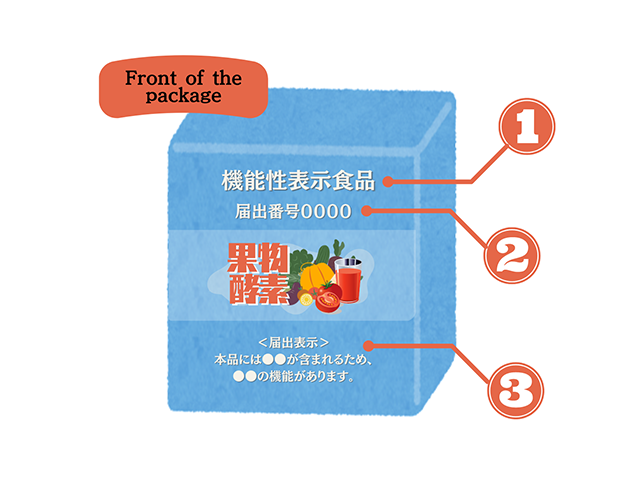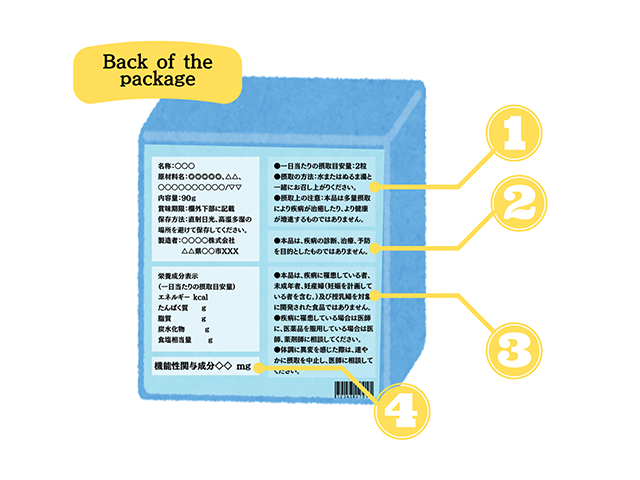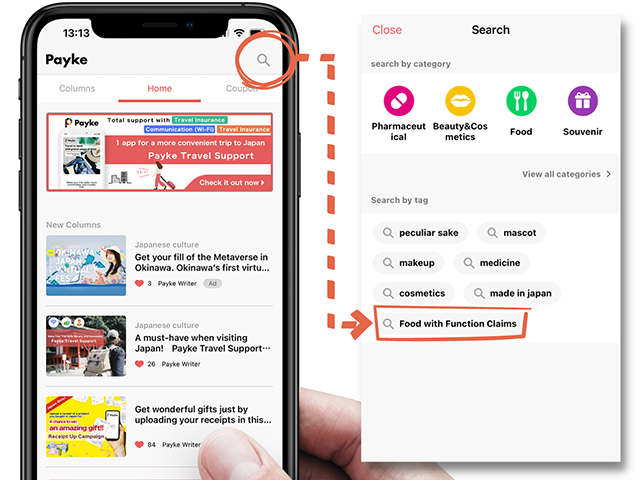Good to Know: Tips for Choosing High Quality Japanese Health Foods

What do you pay attention to when purchasing Japanese health foods? The ingredients? The size of the package or bottle? Or do you rely on word of mouth? In this article, we share tips for choosing Japanese health foods with greater peace of mind and focus on how to tell which items are considered “Foods with Function Claims.”
What are Foods with Function Claims?
Foods with Function Claims are food items that have been registered with the Japanese government (Consumer Affairs Agency) as products whose labels bear function claims based on scientific evidence. For example, such products can be labeled as having certain functions that help maintain and promote health. “Helps settle the stomach” or “slows fat absorption” are just two examples of function claims.
Foods with Function Claims can be labeled with function claims based on scientific evidence. Information on the evidence supporting the claimed function of the food item is submitted to the Japanese government (Consumer Affairs Agency) before the product is marketed, and it’s function is guaranteed. (We’re sure that your country has its own rules when it comes to labeling food products, and Japan has its own rules as well.)
This means that you can choose the right foods for your health condition based on the correct product information.
How to Identify Foods with Function Claims
The key to identifying Foods with Function Claims is whether or not the package is labeled with the term “Foods with Function Claims.” In Japanese, the term is“機能性表示食品 (kinosei hyoji shokuhin)”. You can also check to see if the product is listed on the Consumer Affairs Agency’s website.
Product packages are labeled as follows.

- The product is labeled with the term “Foods with Function Claims” on the main side of the package.
- The Notification Number is displayed.
- The label bears the claim submitted to the Secretary-General of the Consumer Affairs Agency regarding the product’s function based on scientific evidence.*Wording indicating how it is helpful for maintaining and promoting health.

- Lists the recommended daily dose, intake method, and warnings. Please check these details prior to use.
- Foods with Function Claims are not pharmaceutical products.
- This product is not intended for people suffering from illnesses, minors, pregnant women (including those planning a pregnancy), or lactating mothers.
- This indicates the quantity of functional substance per unit of recommended daily intake.
The following are examples of claims that are used to describe a product’s function based on scientific evidence:
- Reduces body fat
- Helps control spikes in blood sugar
- Lowers blood pressure
- Improves gut health
- Reduces stress and fatigue
- Helps prevent memory loss
- Supports joint movement
Take Advantage of the Tag Feature!
It’s difficult to tell one Japanese health food product from another because many of them are labeled in Japanese. And moreover, it’s hard to read Japanese websites, right?
To address this issue, the Payke app has a tag function that enables you to search for products.
From the app’s Home screen, move to the following screen and tap the “Foods with Function Claims” tag. A list of Foods with Function Claims available in Japan will be displayed!

Also, when you scan the barcode of a product, the following image will be displayed if the product is a Food with Function Claims.
Check our product pageSummary
How did you find this article? This time we introduced Foods with Function Claims.
We hope you will refer to it when choosing which Japanese food items to purchase!
You can also use the tag function to find your favorite Japanese products.
We will be creating more useful tags in the coming months as needed!
This article was written based on information specified on the Consumer Affairs Agency’s “Foods with Function Claims” page.https://www.caa.go.jp/policies/policy/food_labeling/foods_with_function_claims/